Getting your snowmobile’s track adjusted correctly doesn’t have to be complicated. In this guide, we’ll show you the tools, step-by-step instructions, and troubleshooting tips for all major brands — Polaris, Ski‑Doo/Lynx, Arctic Cat, Yamaha, and more. If you do it right, your snowmobile will run great quickly. Why Track Tension Matters Track tension directly affects […]
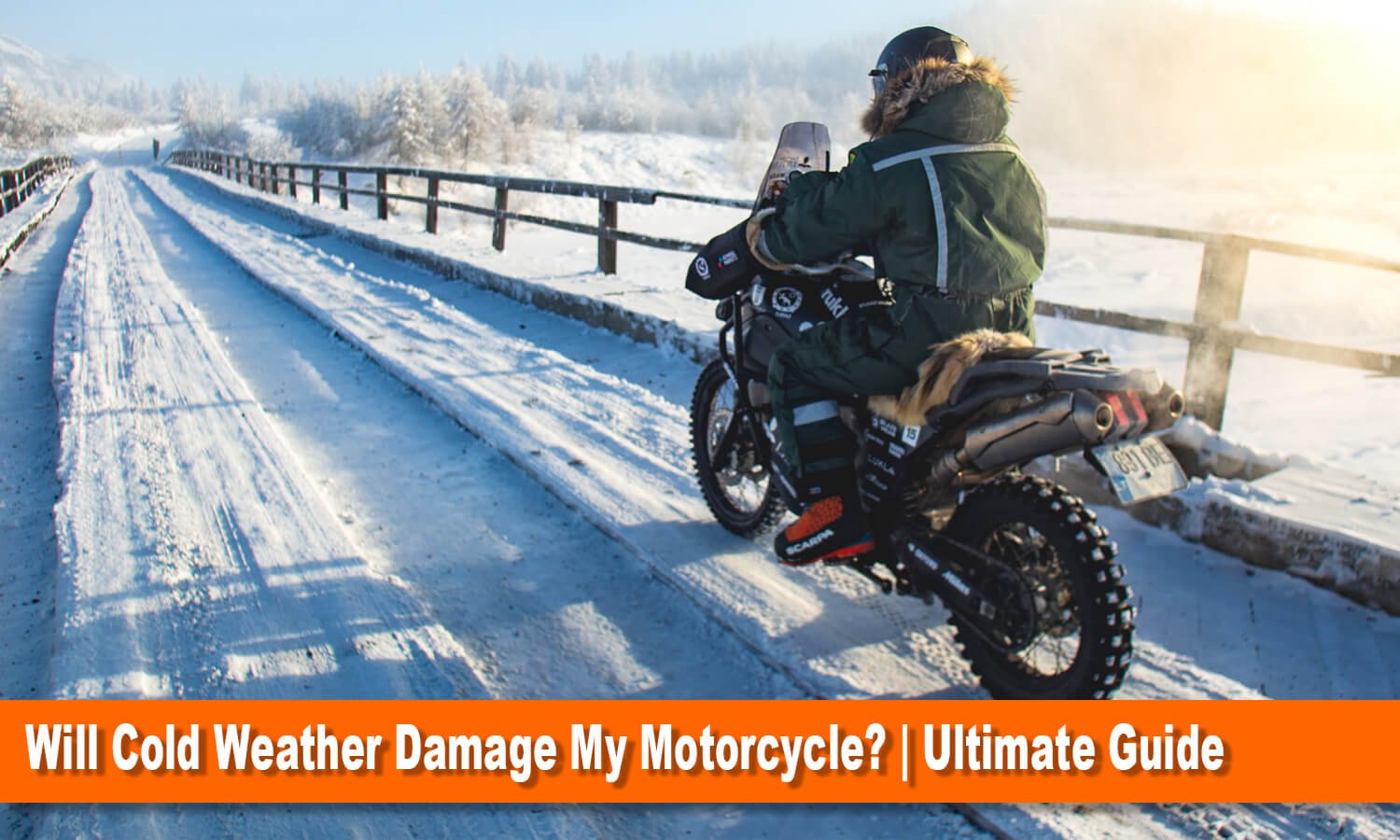
Will Cold Weather Damage My Motorcycle? 2025 Ultimate Guide
Cold weather can be tough on many machines, and motorcycles are no exception. If you’re wondering, “Will cold weather damage my motorcycle?” the answer depends on how you prepare and care for it.
This guide will help you understand how cold weather affects your bike in the winter. And, we will also provide detailed tips to protect and maintain it during winter.
Table of Contents
How Cold Weather Affects Your Motorcycle?
1. Engine and Fluids
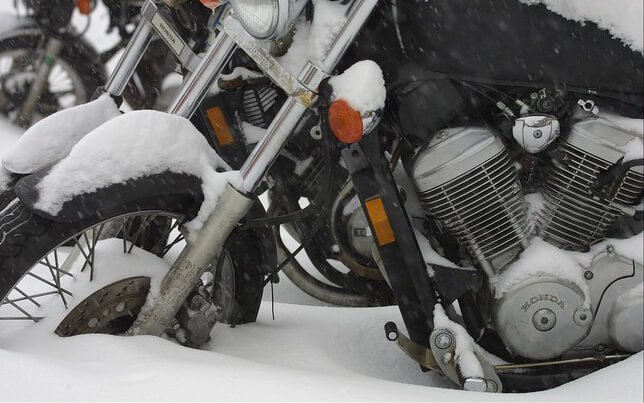
you should protect the motorcycle engine during cold weather
The motorcycle engine and its fluids are particularly vulnerable to cold temperatures. When temperatures drop, oil thickens, making it harder to circulate through the engine.
This can lead to poor lubrication, increased wear and tear, and difficulty starting the engine.
Similarly, coolant and brake fluids can also lose efficiency in extreme cold.
2. Battery Performance
Cold weather is notorious for draining motorcycle batteries. The reason is that motorcycle battery has a harder time holding a charge in low temperatures.
If your bike is left outside or unused for extended periods, the battery might die completely. In the end, it will leave you stranded.
3. Tires
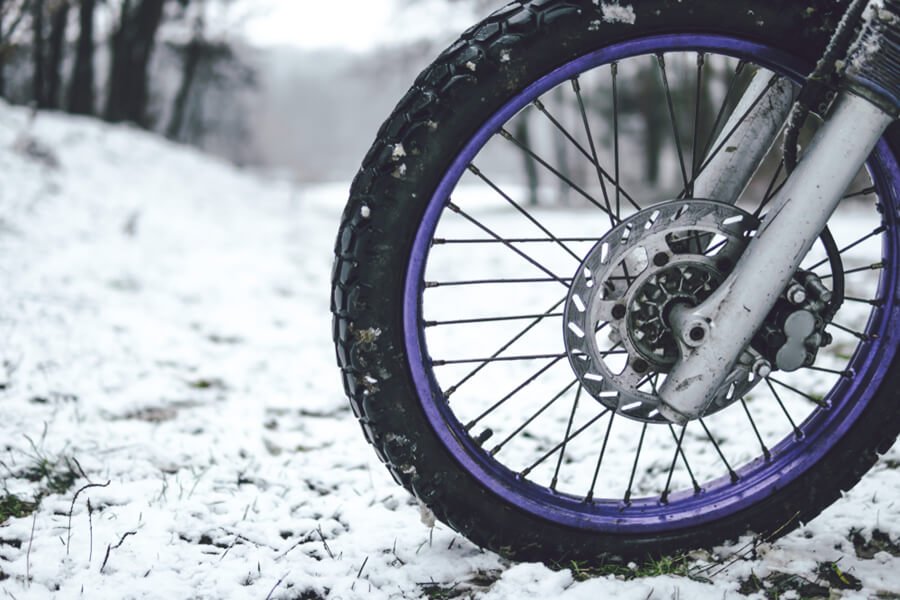
cold weather may cause tire pressure decrease
Tire pressure decreases in cold weather. Underinflated tires reduce grip, making riding dangerous.
Additionally, the rubber can harden in very low temperatures. This may reduce the motorcycle's traction and increase the risk of skidding.
4. Fuel System
Condensation can form in the fuel tank when temperatures fluctuate. This water can mix with fuel, causing poor performance or even engine damage.
For carbureted motorcycles, cold weather can make the carburetor more prone to freezing. If not handled properly, it may lead to starting problems.
5. Metal Components
Metal parts can contract in freezing temperatures. This is an unavoidable problem in winter.
This contraction can make fasteners loose over time and may even cause cracks in extreme cases.
Besides, salt on winter roads can also lead to corrosion. it can weaken the structural integrity of your motorbike.
Tips to Protect Your Motorcycle in Cold Weather
Now that you understand the risks, let’s explore how to protect your bike.
Here are practical steps to safeguard your motorcycle and keep it in good condition through the cold months.
1. Store Your Bike Properly
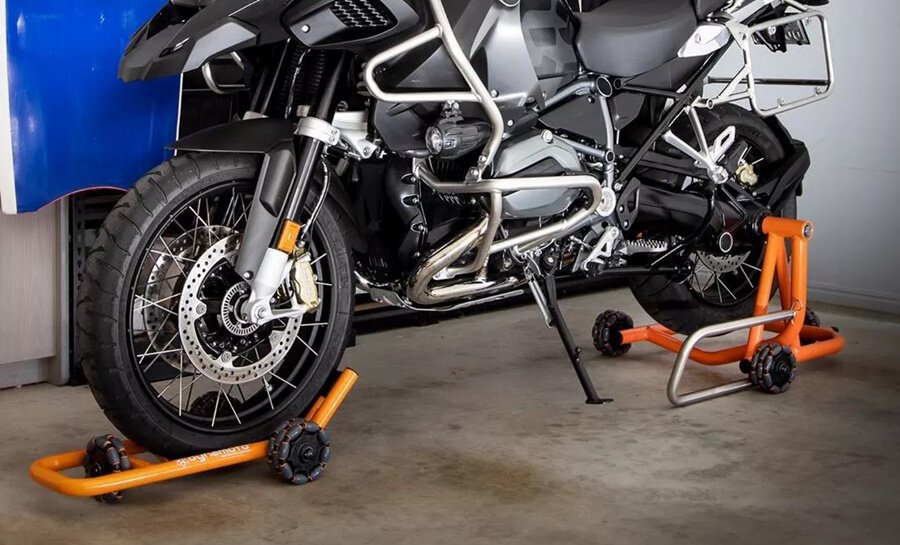
store your motorcycle properly in the winter days
Proper storage is one of the best ways to prevent cold weather damage in winter.
- Use a Garage or Shelter: Keep your bike indoors if possible. A heated garage is ideal, but even an unheated space can shield it from frost and snow.
- Invest in a Good Cover: If indoor storage isn’t an option, buy a high-quality, weather-resistant motorcycle cover. It can protect your motorcycle against moisture and freezing temperatures.
2. Maintain the Battery
- Use a Battery Tender: A battery tender or trickle charger keeps your battery charged when the bike isn’t in use. These devices prevent the battery from draining due to cold weather.
- Disconnect the Battery: If you’re not riding for an extended period, disconnect the battery from your motorcycle. And, store it in a warm, dry place.
3. Protect the Fuel System
- Use a Fuel Stabilizer: Adding a fuel stabilizer prevents condensation and keeps the fuel fresh. This is especially important for motorcycles stored during winter.
- Keep the Tank Full: A full tank minimizes air space, reducing the chance of condensation forming inside the tank.
4. Check and Change Fluids
- Switch to Winter Oil: You can use winter oil if your motorcycle operates in very low temperatures. The lower-viscosity oil can ensure easier circulation. (Note: Check your owner’s manual for the winter oil recommendations.)
- Flush and Refill Coolant: Ensure your coolant mix is appropriate for freezing temperatures. A 50/50 mix of antifreeze and distilled water works well for most climates. If necessary, change the coolant before you store the motorcycle.
5. Maintain Tire Pressure
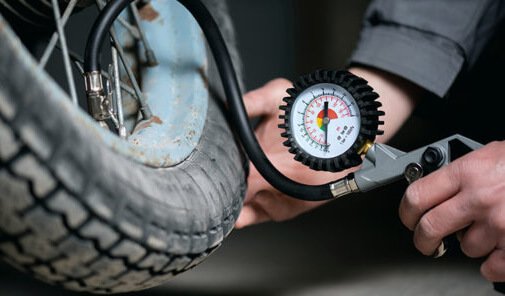
check the motorcycle tire pressure regularly
- Regularly Check Pressure: Use a tire pressure gauge to monitor your tires. Inflate them to the manufacturer’s recommended levels to ensure proper grip and handling.
- Avoid Prolonged Exposure to Cold Pavement: If possible, use a motorcycle stand or place them on a piece of wood. This can keep your tires off the frozen ground.
6. Clean and Lubricate
- Wash Your Bike: Clean off dirt, salt, and grime after every ride in winter conditions. Salt is highly corrosive and can damage your bike if left untreated.
- Apply Lubrication: Lubricate the chain, cables, and other moving parts to prevent rust and freezing. Use a high-quality motorcycle-specific lubricant for the best results.
7. Inspect for Damage
Regularly check your motorcycle for signs of damage. Look for rust, cracks, or loose components. Catching issues early can save you costly repairs down the road.
Essential Winter Riding Gear for You and Your Bike
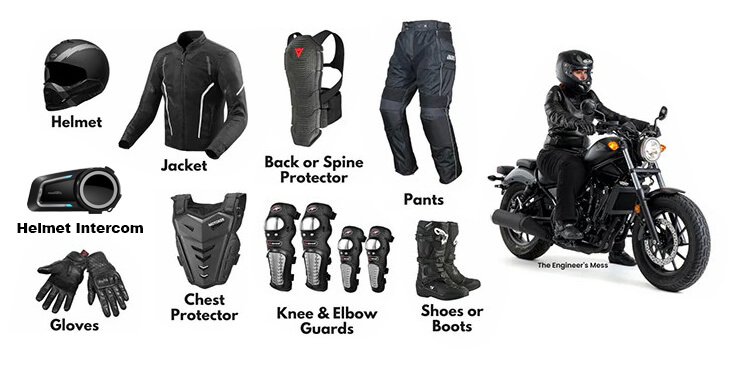
essential winter riding gear
If you’re planning to ride in cold weather, staying warm and protected is just as important as maintaining your motorbike. Here’s what you need:
Rider Gear
- Thermal Base Layers: Start with thermal underwear and base layers to trap body heat.
- Winter Helmet: Wear winter motorcycle helmet can keep your head warm in those cold weather days.
- Insulated Jacket and Pants: Choose gear with built-in insulation or layer up with windproof clothing.
- Heated Gloves and Grips: Heated gloves or grips keep your hands warm, ensuring better control over your bike.
- Balaclava or Neck Warmer: Protect your face and neck from icy winds with a balaclava or neck warmer.
- Waterproof Boots: Insulated, waterproof boots keep your feet dry and warm during winter rides.
Motorcycle Accessories
- Heated Seat: If you ride often in the winter, consider installing a heated seat for added comfort.
- Hand Guards or Wind Deflectors: These keep cold air off your hands and improve comfort.
- Windshield: A larger windshield reduces wind chill, making long rides more bearable.
- Helmet Intercom: Use the motorcycle Bluetooth intercom so that you can answer phone calls hands-free, or communicate with other riders in your riding group. It is also an essential gear that can improve your riding safety.
- GPS navigation device: You many need a GPS or map to give you the directions when you are riding at an unfamiliar place.
Bonus Tips for Winter Riding
- Warm Up Your Bike: Let your motorcycle idle for a few minutes before riding. This ensures the engine oil circulates properly.
- Ride Cautiously: Watch out for icy patches, wet leaves, and salt on the road. These can make riding slippery and dangerous.
- Plan Your Routes: Stick to well-maintained roads and avoid areas prone to black ice or heavy snow.
FAQs
What If You’re Storing Your Motorcycle All Winter?
If you’re not planning to ride at all during the winter, here’s how to prepare your bike for long-term storage:
- Stabilize the Fuel: Add a fuel stabilizer and run the engine for a few minutes to circulate it.
- Lift the Tires: Use stands to prevent flat spots on tires.
- Cover the Exhaust: Plug the exhaust with a clean rag or cover. This can prevent rodents or moisture from entering the motorcycle's exhaust.
- Periodic Check-Ins: Even in storage, check your motorcycle periodically. Make sure everything remains in good condition.
If you're hungry for more, we have another blog about Motorcycle Winter Storage Tips | 10 Must-Do Steps.
How cold is too cold for a motorcycle engine?
A motorcycle engine can struggle when temperatures drop below 32°F (0°C). That's because the oil thickens and makes it harder for the engine to start and run smoothly.
Extremely cold weather, especially below 20°F (-7°C), can cause battery issues, fuel freezing (in carbureted bikes), and stress on engine components.
While modern bikes can handle cold starts, prolonged exposure without proper care (like using a battery tender or winter-grade oil) can lead to wear and tear.
Riding in such cold conditions can also reduce tire grip and make it unsafe overall.
Is cold start bad for motorcycles?
Cold starts can be hard on motorcycles, especially in very low temperatures.
When the engine is cold, the oil is thicker and doesn’t flow well, so parts don’t get proper lubrication right away. This can cause extra wear on the engine over time.
For carbureted bikes, cold starts can also lead to fuel issues. Modern motorcycles handle cold starts better, but repeated cold starts without warming up the engine properly can still cause damage.
To minimize harm, let the engine idle for a minute or two and use the correct oil for cold weather.
Do you need to warm up motorcycle engine?
Yes, you should warm up a motorcycle engine, especially in cold weather.
When the engine is cold, the oil is thick and doesn’t flow properly, so warming it up ensures all parts are lubricated.
Letting the engine idle for 1-2 minutes helps it reach a safe operating temperature. However, don’t overdo idling, as it can waste fuel and cause carbon buildup.
Modern fuel-injected bikes need less warm-up time compared to older carbureted bikes.
After warming up, ride gently for the first few miles to let the engine fully adjust to running conditions.
Final Thoughts
Cold weather doesn’t have to mean damage to your motorcycle. With proper preparation and care, you can protect your bike from the harsh effects of winter.
Whether you’re riding or storing it, the key is to stay proactive.
Follow these tips to keep your motorcycle in excellent condition and ready to hit the road when warmer weather returns.
Remember, a well-maintained bike not only lasts longer but also keeps you safer on the road. Take the time to winterize your motorcycle, and you’ll enjoy many more miles of adventure—no matter the season.

Motorcycle mechanic, writer. Interested in motorcycle gear for years. Like to stay up to date with the newest products and techniques of the motorcycle.
Motorcycle riding is all about the sense of freedom, adventure, and thrill of the open road. But come on—being connected when you ride isn't always an easy thing. Whether you're riding with a buddy, navigating traffic in the city, or long-distance riding, effective communication is crucial. That's where the Fodsports T5 and T6 come in, […]
If you're looking for a new motorcycle intercom system this year, Fodsports has something exciting in store. The company has launched two new Bluetooth helmet intercoms: T1 and T1 Pro. Both models bring upgraded features, sleek design, and high-definition audio quality for riders who want to stay connected, entertained, and safe on the road. But […]
Fodsports T1 and T1 Pro: The Newest Bluetooth Intercoms for Riders. Whether you’re cruising on highways, exploring rugged trails, or commuting daily, clear communication is key. Fodsports is thrilled to launch its latest Bluetooth intercoms: the T1 and T1 Pro. Built for riders who demand reliability, versatility, and crystal-clear sound, these devices redefine how you […]
Many riders who aren't so tall or ladies just starting to ride bikes need to pick out the best Motorcycles for Short Riders and Women. They gotta look for three key things: a seat that's not too high up, a bike that's not too heavy, and something that looks good enough to give them confidence. […]
Fodsports FX 60C vs FX30C Pro: What's new techs are the FX 60C bringing to us? Fodsports is a brand worth-mention for helmet communication and video recording. This brand has established itself as a key player with its innovative Bluetooth camera intercom systems. Recently, Fodsports has released a new camera intercom, the FX 60C. How […]
